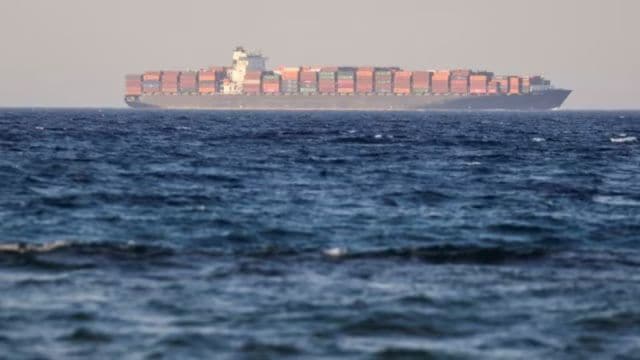
More than a year after another incident severed the lines, analysts said Tuesday that a ship most likely cut cables in the red sea that caused internet connectivity issues in Africa, Asia, and the Middle East.
The narrow Bab el-Mandeb Strait, the southern mouth of the Red Sea that divides East Africa from the Arabian Peninsula, is traversed by 15 submarine cables, according to the International Cable Protection Committee, which spoke to The Associated Press.
Authorities in several nations over the weekend determined that the impacted cables were the FALCON GCX, India-Middle East-Western Europe, and South East Asia–Middle East–Western Europe 4.
The Europe India Gateway cable was added to that list on Tuesday, according to Doug Madory, director of internet intelligence at the company Kentik.
Initial reporting suggested the cut happened off the coast of Jeddah, Saudi Arabia, something authorities in the kingdom have not acknowledged, nor have the companies managing the cables. Internet access in Asia and the Middle East was hampered as a result.
“Early independent analysis indicates that the probable cause of damage is commercial shipping activity in the region,” John Wrottesley, the committee’s operations manager, told the AP.
“Damage to submarine cables from dragged anchors account for approximately 30 per cent of incidents each year representing around 60 faults.” The working premise, Madory told the AP, was that a commercial ship would drop its anchor and drag it across the four wires, cutting the connections. In the Red Sea, cabling may be shallow, which makes it simpler for an anchor drag to impact them.
Together with satellite links and land-based cables, underwater cables form one of the internet’s backbones. Typically, internet service providers have multiple access points and reroute traffic if one fails, though it can slow down access for users.
However, internet users may experience latency, or lag, as a result of traffic rerouting. According to Madory, it seemed like the cable break had impacted at least ten countries in Asia, Africa, and the Middle East. These countries included the United Arab Emirates, Pakistan, and India.
Concerns over cable security have also arisen in the wake of Houthi rebel attacks on ships in Yemen related to the Israel-Hamas conflict in the Gaza Strip.
In early 2024, Yemen’s internationally recognised government in exile alleged that the houthis planned to attack undersea cables. Several later were cut, possibly by a ship attacked by the Houthis dragging its anchor, but the rebels denied being responsible.
For breaking news and live news updates, like us on Facebook or follow us on Twitter and Instagram. Read more on Latest World on thefoxdaily.com.


COMMENTS 0